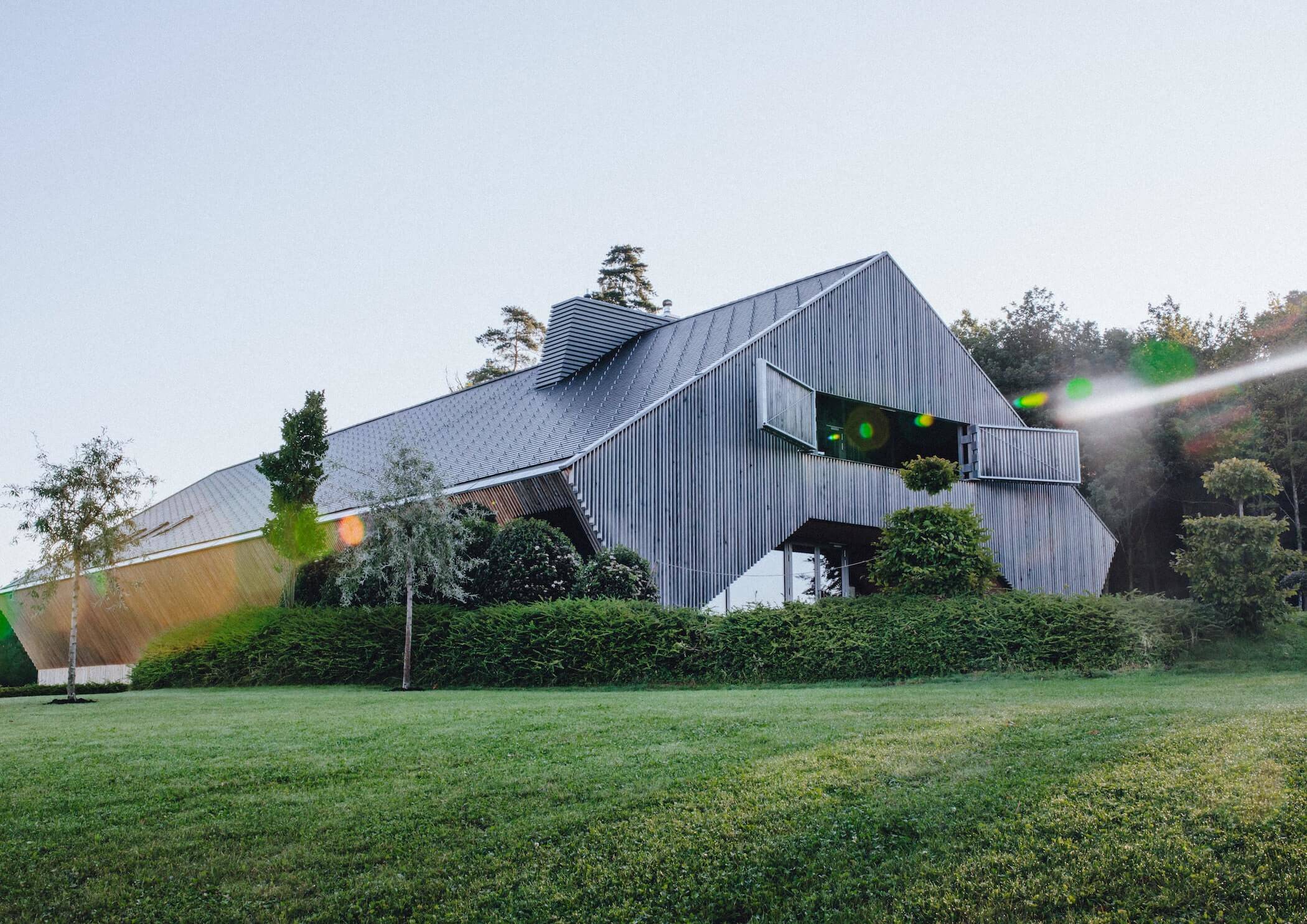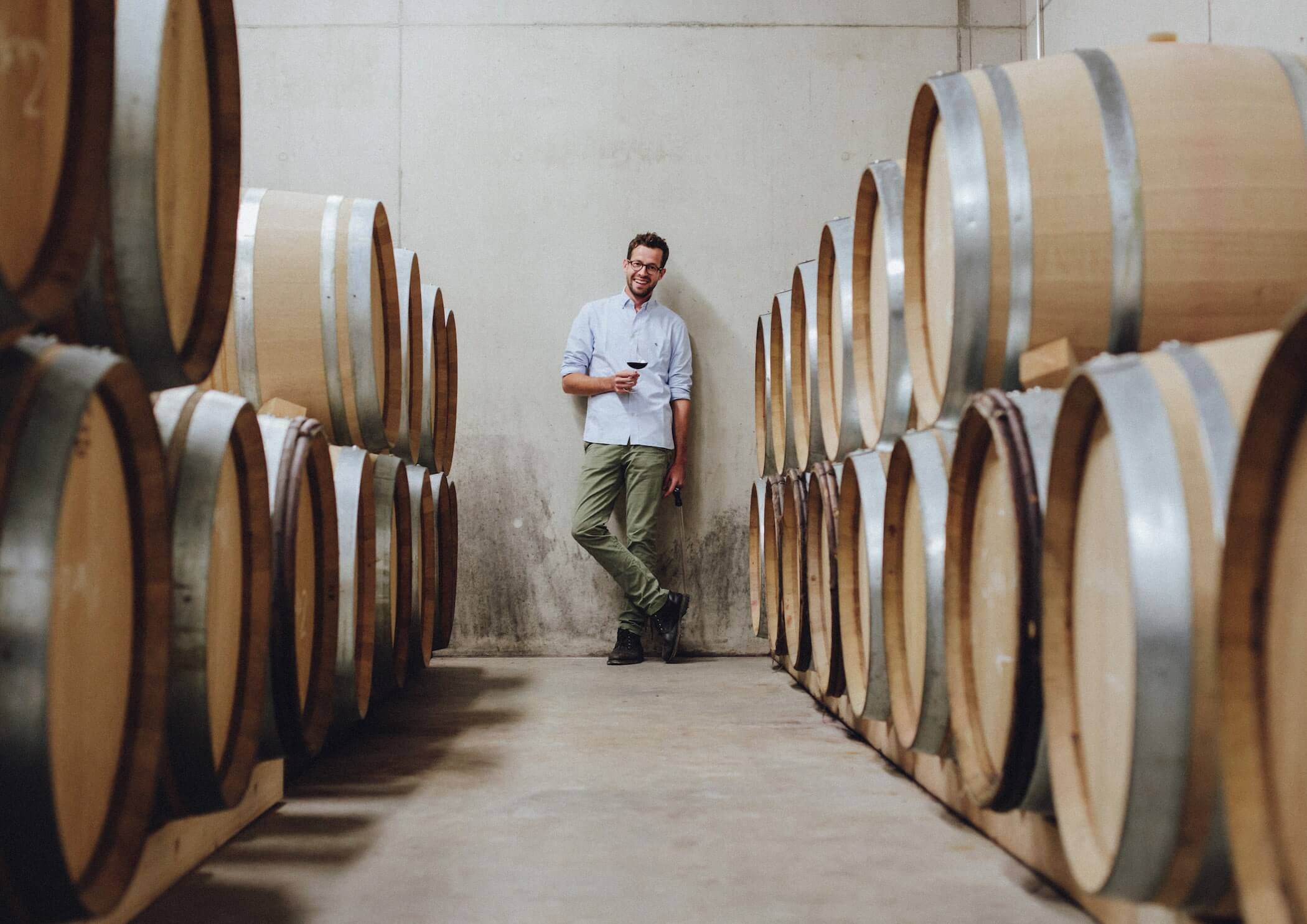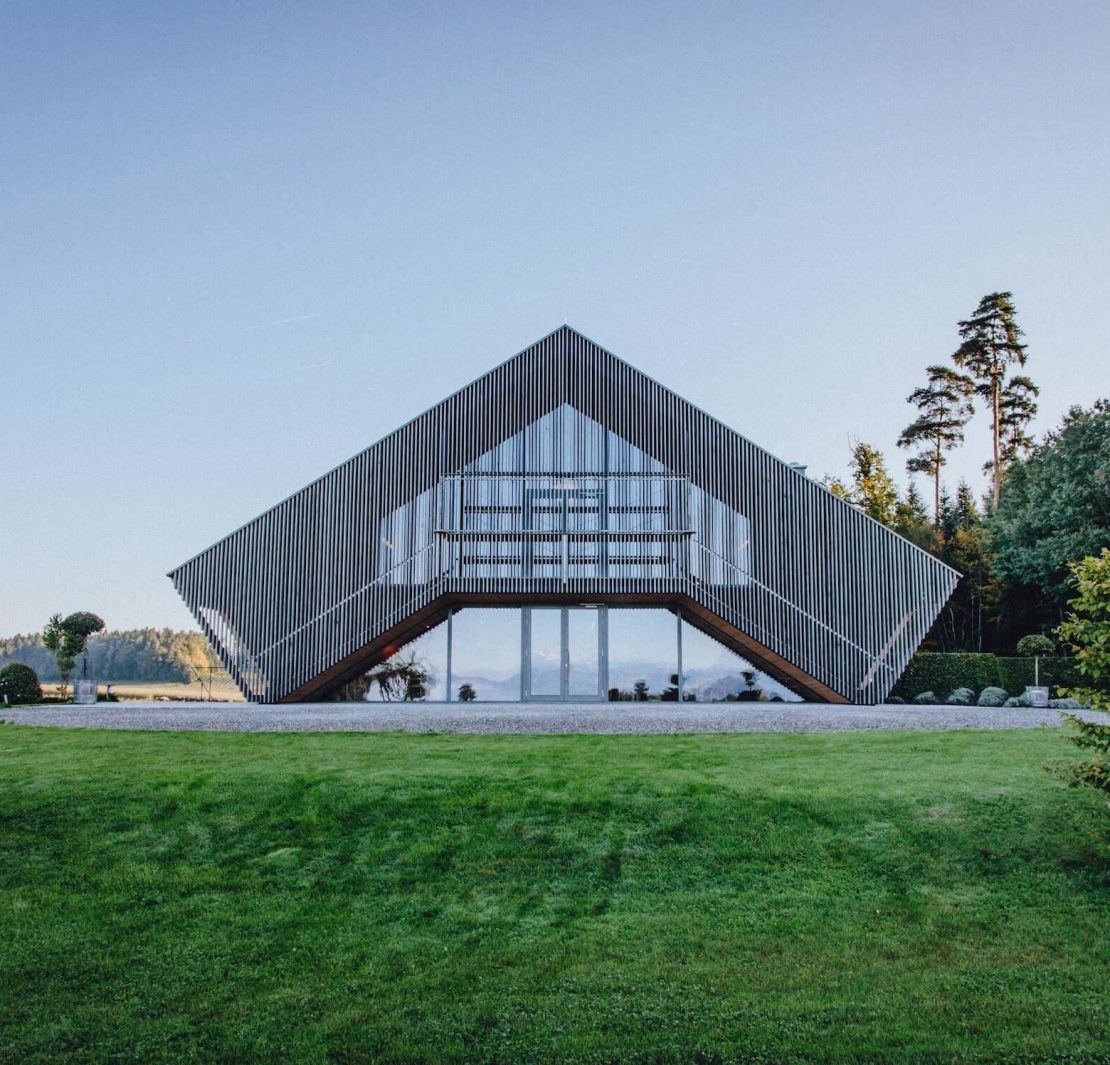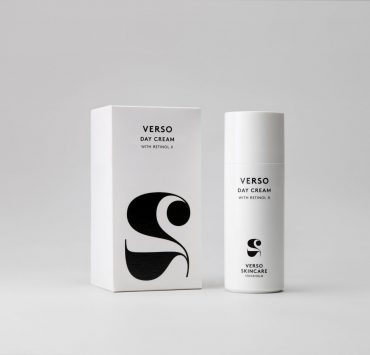The Schmidt Winery’s main production building is a living testament to the values of its founding family. Inspired by the age old family farmhouse, it is composed almost entirely of wood and sits atop a hill surrounded by the very rows of organised grapevines that represent the Schmidt livelihood.
From the terrace of its wine bar, the view encompasses Lake Constance, as well as the Alps in the distance, as glasses of wine, which were harvested and aged on this very land, are served and sipped in endless unison. Yet, much more than a site for architecture that’s found a perfect balance with its surroundings, where wine is made and enjoyed, the Weingut Schmidt story goes much deeper, right into the soil.

“The situation in Lake Constance is very special,” says Sebastian Schmidt, one of the sons of the Schmidt family who has largely taken over the wine production. “There’s no other place in Germany that possesses the same geological composition,” he says, “you have to imagine that the whole ground on which you stand on has actually come from the Alps.”
What Schmidt is referring to is a glacier moraine, or the mass of rocks and sediments that were deposited here during the last ice age, which give the soil a unique composition of finely ground limestone, sandstone and granite. It is this terroir that makes the Schmidt wine so expressive and lends it a mineral taste that is rare in Pinot varieties, which the vineyard focuses on, specifically Weissburgunder (Pinot Blanc), Grauburgunder (Pinot Gris) and Spätburgunder (Pinot Noir).
When the grape is perfect it often decides itself when it wants to go into the glass
Of course, the soil itself is only one part of the journey. The tale of the perfect grape is one of meticulous toiling as well as a state of controlled idleness. “Grapevines require very intensive maintenance,” says Schmidt, “you have a lot of work all year round and spend most of your time outside trying to harvest the perfect grape by hand.”
Whether it’s making sure that the vines grow in the right direction and into the right trellis or pruning leaves in order to create more air flow, the majority of the Schmidt Winery winemaking journey unfolds personally and hands-on in the fields. “For me, once the grapes make it into the press and later into the barrel, it’s just a matter of controlled idleness,” says Schmidt, “because when the grape is perfect it often decides itself when it wants to go into the glass.”

Yet despite such a personal connection to the soil and the natural processes, Schmidt Winery wines purposefully avoid the Bio or Demeter label, which their counterparts often tout on their bottles. “I want to bring as much of the terroir into the glass as possible and so it’s only logical for me to take care of my soil in a natural and biological way, to keep it perfectly healthy with all the necessary organisms,” says Schmidt who would rather that people come and see how his wine is produced naturally, than relying blindly on a label.
Come lunchtime the entire farmyard smells like freshly baked bread
Inside the wine bar, neatly stacked on wooden shelves, Schmidt Winery wine bottles are on display with their bright blue caps and a logo that was drawn by Schmidt’s grandfather himself, depicting the winemaking journey from vine to bottle. On the top shelf, a few bottles of Schnapps are also on sale, including the newest addition, the Vollkorn, a Schnapps made from grain with a contemporary logo, a nod from the family’s younger generation.
Like everything else in the family business, this Schnapps was also inspired by a tradition: specifically, the homemade bread that’s baked in Schmidt Winery's winter restaurant Rädle, which was passed down from grandmother and grandfather to mother and then son. “Come lunchtime the entire farmyard smells like freshly baked bread,” says Schmidt, “and this familiar smell inspired my brother and I to create a spirit that somehow represents it.”

As for the future of the family business, Sebastian Schmidt is more pressed to finally enjoy the fruits of his labor. And to spend time with his own son, perhaps the next generation of a business so deeply invested in the soil, the vines and, most importantly, the family.
Discover other exquisite German wineries:
Words: Feride Yalav-Heckeroth
Photo: Weingut Schmidt
Last Updated on March 16, 2024 by Editorial Team
Feride, a seasoned traveller with a deep passion for exploration, brings a unique perspective to her writing. She skillfully captures the essence of diverse destinations. Among her works, she has authored several guides, such as "Secrets of Istanbul," showcasing her expertise.










